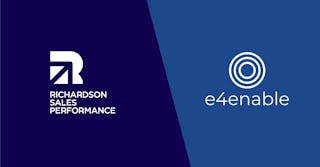Using the Sales Process to Measure Success: 3 Sales KPIs Everyone Should Follow

Sales KPI measurements are an important part of your organization's sales process. Sales is a measurement-based business.
Metrics are tracked for quota attainment, sales by product line, sales by segment, sales by territory, new business versus renewals, forecast versus actual results, number of sales calls, etc.
Lagging indicators of success, like revenues, are cumulative. They describe commitments and deals that have occurred. They mark the status of an opportunity at the end of the sales process.
Leading indicators of success are incremental. They are based on actual customer behavior and reactions to what the sales rep does or says. They predict future customer commitment and provide insights into the status of an opportunity during the sales process.
Sales Process and Sales KPIs
So what key performance indicators - Sales KPIs - are most important to track? Following are three sales KPIs everyone should follow, you might be able to capture some of these metrics in your team's CRM. They are a blend of lagging and leading indicators because both are necessary for transparency into the progression and ultimate outcome of opportunities. Focusing on these three will tell you whether you're going to be successful - and whether, at the end of the day, you have in fact been successful.
- Forecast accuracy is an important leading indicator. The more forecast accuracy improves, the more confident you can be about the performance of your organization. If you are in the 50% range and trending higher, you are doing the right things. If you are at 60% or 65% and improving, that is even better. If you are at 80% to 85% accuracy or higher, you are among the top-performing organizations. Wherever you are, as long as the accuracy rate improves, you can be sure you're on the right track.
- Sales cycle is typically a lagging indicator that provides good information for maintaining or improving efficiency. It is important to know before, during and after the sale where bottlenecks occur and where days can be eliminated from the cycle. Just as important as reducing the sales cycle is making sure there is no increase in the number of days. When sales managers can identify where opportunities tend to get stuck within the sales process, this sales KPI can become a leading indicator as well. If opportunities used to get stuck but now continue to progress, reducing days of the sales cycle, then you know you are doing the right thing. And if opportunities are dropping out faster in the early stages of qualification, that is a good thing, because it means the overall process is more efficient.
- Quota attainment is the final sales KPI - a lagging one - that should be followed. This metric is measured for every individual, but the equally important data to note is overall achievement. Tracking the group average is not about making your top performers perform better, it is about extending their level of excellence to the rest of your sales organization. Instead of focusing on, say, the 20% of your high achievers who drive 80% of your revenue, you can make more of an impact by focusing on the larger portion of your sales force and elevating their game.

Brief: 8 Critical Selling Metrics
DownloadGet industry insights and stay up to date, subscribe to our newsletter.
Joining our community gives you access to weekly thought leadership to help guide your planning for a training initiative, inform your sales strategy, and most importantly, improve your team's performance.






